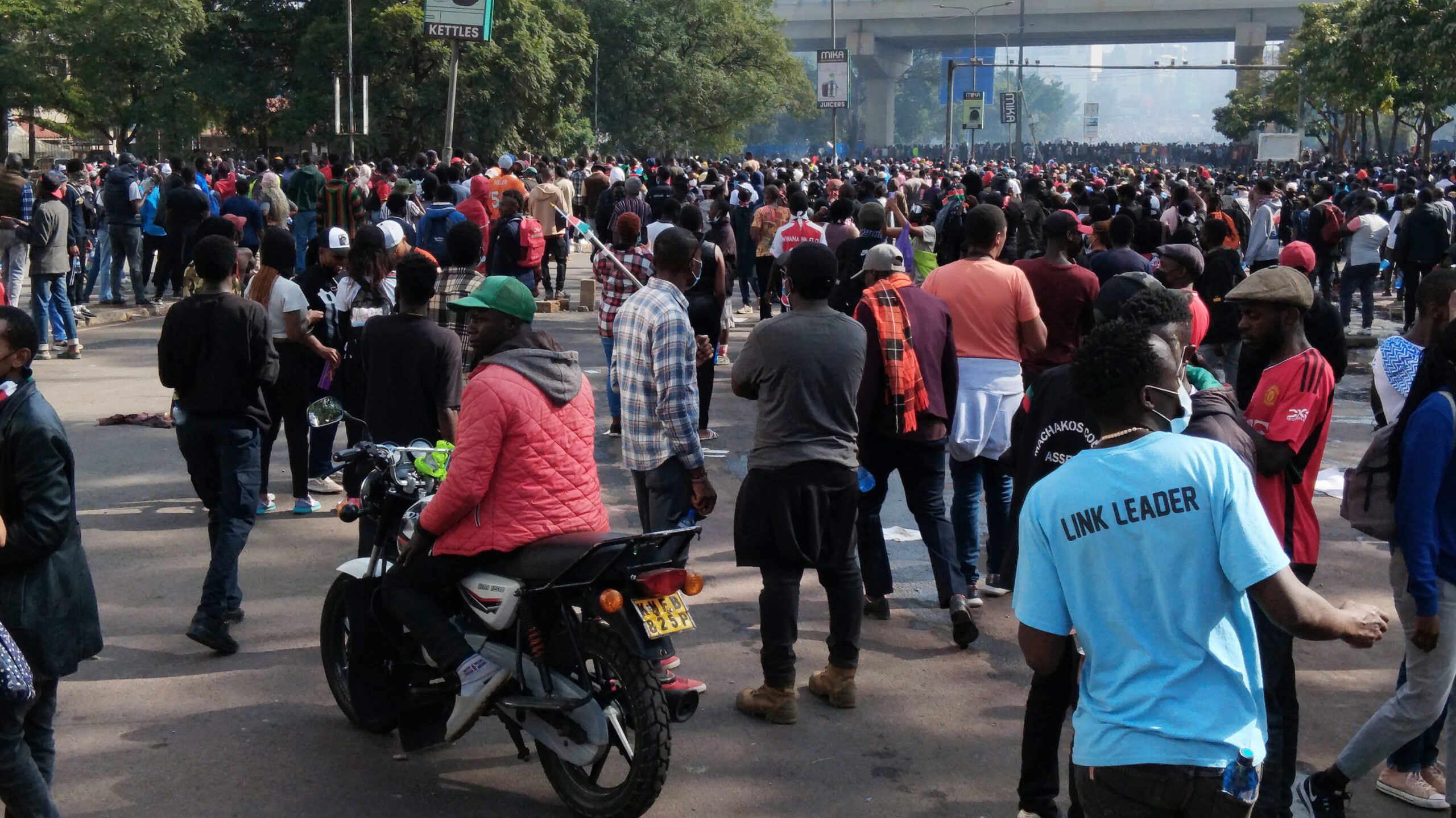Kariuki Kiragu: Impacting lives through architecture
Kariuki Kiragu is a registered architect, social entrepreneur, and eco-technologist. He is also the director of Design Solutions – an architectural firm. He talks to EDNA GICOVI about the need for affordable housing, how architecture can be used to impact lives through community involvement in project planning, design and implementation, and the necessity of friendship with one’s children.
He would charge me Ksh 87.50 for every minute I was late. ‘Take your time’ he wrote on a text, in response to my apology for running late. For a moment, I thought he was serious and I panicked a little. His mock demand for payment, a comical look on his face as he held out his hand in greetings, is what broke the ice when I finally rushed in and explained the unavoidable circumstances that had caused my tardiness.
“How did you find out about me?” he asked when I settled down and told him about a story I did last year that led me to his. I found out about Kariuki Kiragu while writing another story for this very column, about Fred Mwangi who conceptualized the manual block press, a machine that creates interlocking stabilized soil blocks (ISSB) for affordable, eco-friendly housing.
As a consumer of the ISSB, Kariuki provided in-depth information about some projects he had completed using these soil blocks. Nyumbani village, a resettlement programme in Kitui that has touched many lives, and Kariuki’s passion to not only put up buildings but also to have decent, affordable housing that has a bearing on people’s quality of life, are what led to this interview.
Born in 1961, Kariuki grew up in Lanet, Nakuru, playing in the open fields, milking cows, tending goats and chicken, and enjoying the fullness that, he says, stemmed from living on a farm surrounded by nature. He recalls time spent looking down a plain with a red tractor right across where his family lived as a child, while his older siblings were in school.
“I’d listen to the wind blow and think about many things. I learned how to listen to my soul,” he says wistfully, adding that the plain has since become a settlement with informal housing, not at all like his idyllic childhood memories.
He loved the stars and had dreams of becoming an astronaut in his early years. “When I was about 10, my brother and I made wings out of some cartons and were about to test them out when we were found by our mother on top of a tree. We were thoroughly thrashed and the wings were burnt,” he says with a chuckle. In Mang’u High School, realizing that he couldn’t make a living as an astronomer, he gave up this dream.
While at the Lenana School for his ‘A’ levels, Kariuki started considering architecture as a career. “I was good at math but I had initially thought of civil engineering which didn’t interest me very much. But I knew two people who were doing architecture at the time. They seemed to be doing well. They were driving and girls liked them,” he says, with another chuckle, adding that a talk with his aunt, Dr. Betty Gikonyo, helped him solidify his decision to pursue architecture at the University of Nairobi.
Building his dream…
Kariuki reveled in the creativity he encountered in the school of architecture and learning how to translate this into life. Being a hands-on individual, he developed an interest in stabilised soil blocks made from ordinary soil and a little cement after watching the production process at the research department of the university.
“I’ve always liked making things for myself,” he says, adding that during their fourth year, the architecture students would do low cost housing projects. “I thought that the lowest cost of a building would be one made from the soil we can dig out of the ground. These blocks had sockets and could fit into one another, which meant that the builders wouldn’t even have to use mortar, which would further lower the cost,” he says.
However, the entire class, including his lecturers did not see his point of view when he presented his drawings at the end of the semester. “Everybody laughed. They couldn’t imagine how soil blocks could make a decent building,” he says. Nonetheless, 21 years later, Kariuki would be waking up in a house built using these blocks at the Nyumbani village – a model bio-friendly and self-sustaining community serving orphans and elders who have been left behind by the ‘lost generation’ resulting from the HIV/AIDS pandemic.
Kariuki started his architectural career in 1986, working for the Ministry of Roads and Public Works as an assistant architect. During his time there, he encountered a Chinese architect whom he gleaned valuable lessons from. “I understood the importance of being on the field and working with the fundis. I also learnt how to build a team and to brief them on the ideological basis of their work. This makes everyone see their part, no matter what their station is. Since then, I have worked with teams of over 400 people, from labourers to engineers to quantity surveyors and we are friends to date. This is what made us succeed,” he says.
He left 18 months later to venture into private practice. Starting out, he mainly focused on urban commercial and residential buildings before he was drawn to community architecture, appropriate technology, and environmental conservation and most recently, social enterprise that touches on social, spiritual, environmental and economic aspects. He was determined to have his architectural prowess incorporate these aspects. His relevant accomplishments include a parish house in Dandora, Karen Hospital design, Kawangware Vision Center, Impala Club, Nyumbani Village, Agricultural Development Corporation (ADC) housing in Kitale, and proposals on peace villages, war buffers, large dryland irrigation systems, mass substance abuse rehabilitation and many others.
Using architecture to impact lives …
Of significance to Kariuki is his role from 2004 to 2006 as project director of Nyumbani Village, a resettlement and life-prolonging programme. The village, founded by Sr. Mary Owens and the late Fr. Angelo D’Agostino, is a programme in Eastern Kenya caring for both HIV infected and affected children. Its main objective was to establish a self-sustaining, community-based residential village, serving children orphaned as a result of HIV/AIDS. “This was done by providing a family-like settlement where the orphans are under the care of elderly grandparents in a family-like structure and are provided with adequate social support, healthcare and counseling, and both educational support and vocational training,” he says. The programme has helped 781 orphans and 76 grandparents to date.
Kariuki points out that the houses at the Nyumbani Village were constructed using fibre concrete roofing tiles, and interlocking stabilized soil blocks (ISSB), among other affordable and eco-friendly materials. The ISSBs were made using a manual block press that the locals were trained to use, hence providing employment and involvement in a project that was beneficial to them.
“We worked with about 500 men and women with very little prior construction experience who first underwent construction training and then organised themselves into 30 community groups to build the largest eco-construction undertaking in Africa,” he says, adding that by using affordable material, the lowered the cost of building enhanced the project’s sustainability.
Kariuki firmly believes that career growth and contribution to society are the reason for education. “Intelligence requires completion with conviction, passion, hard work and courage. Serve your society and in the end you will get your reward. Your contributions will be recognised. Sometimes it happens immediately, sometimes in bits,” he says.
He feels that we need to relook at housing from an African perspective and adapt a holistic approach that it includes family stability, child nurture, and security in social, spiritual, ecological and economic terms. He is currently working on another model for decent, affordable housing that strengthens families, neighbourhoods and self-services their mortgages in Isinya. The model encourages working close to where one lives by incorporating office units. “This solves the work-life balance because it is like the traditional setting where everything was done at home holistically – entertainment, socialising, celebration, worship and work, all rolled into one as it was in olden days. With more time for family, a healthier upbringing for children is fostered,” he says.
While Kariuki continues to practice conventional architecture, a lot of his projects are progressively more geared towards sustainable environmental conservation, climate change, conflict resolution, poverty alleviation and holistic, multi-level eco-technological training to perpetuate desirable social, environmental, economic and spiritual harmony where buildings are no longer the centre of activity.
Kariuki lectured at the Jomo Kenyatta University of Agriculture and Technology (JKUAT) between 2002 and 2003. He says teaching is a very good way to learn. He has also been a member of the Kenya Biofuels Steering Committee and the Kenya Agricultural Plant Productivity Programme.
In 2006, Kariuki was second runner-up at the UN-HABITAT MILGAP Awards – an awards programme for the East African region that aims to alleviate poverty and promote excellence in public service delivery, good governance, and enhanced local democracy and decentralization – in recognition of the Nyumbani Village project. He has also written and appeared severally in the media on the subjects of low cost housing, social enterprise and eco-technology issues that he continues to propagate.
Be friends with your kids…
Kariuki ardently practices what he preaches. He closed his town office about a decade ago and relocated it metres away from his house so he could work close to where he lives. The father of four says that this has been beneficial to him and his family. “When my children were in primary school, I would take them to school in the morning and in the evenings they would pass by and do their homework at my office as I also worked. This way we got to interact a lot and spend time together, which made us good friends because we could talk all sorts of things,” he says, adding, “If you miss out on the time your child is in primary school, at what point will you find them?”
He says that due to traffic jams and side businesses to make ends meet, many parents come home late, mostly when their children are asleep, and leave very early leaving when their children are still sleeping. The housemaid thus ends up bringing up the children, according to her values and the parents won’t, for instance, know that their son has been on drugs for the last two years. He emphasizes on the great need to be friends with one’s children.
“That’s why it was easy for me to tell them that if they wanted to resist peer pressure, they should tell their peers that ‘daddy said it’s not a good thing.’ They laughed at this but they did it. Be friends with your kids and they will listen to you. You won’t need to force or threaten them,” he adds.
Kariuki is married to Anne, a psychologist who is currently working in the US, and living with their youngest daughter who is in primary school. His first two daughters are in university, while his son is in high school. He jokes that he has become like KANU, being both mama na baba (mother and father), to their three children in his wife’s absence.
“We miss them a lot but we have learned to cope. To be honest, I will be at a loss when my children finally leave home,” he says, adding as we conclude, “We have to deeply educate our children, strengthen our culture, which, among other things, feeds our belief in ourselves, be self-aware and work, not for month-end, but for results thousands of years ahead.”
Published on April 2014




